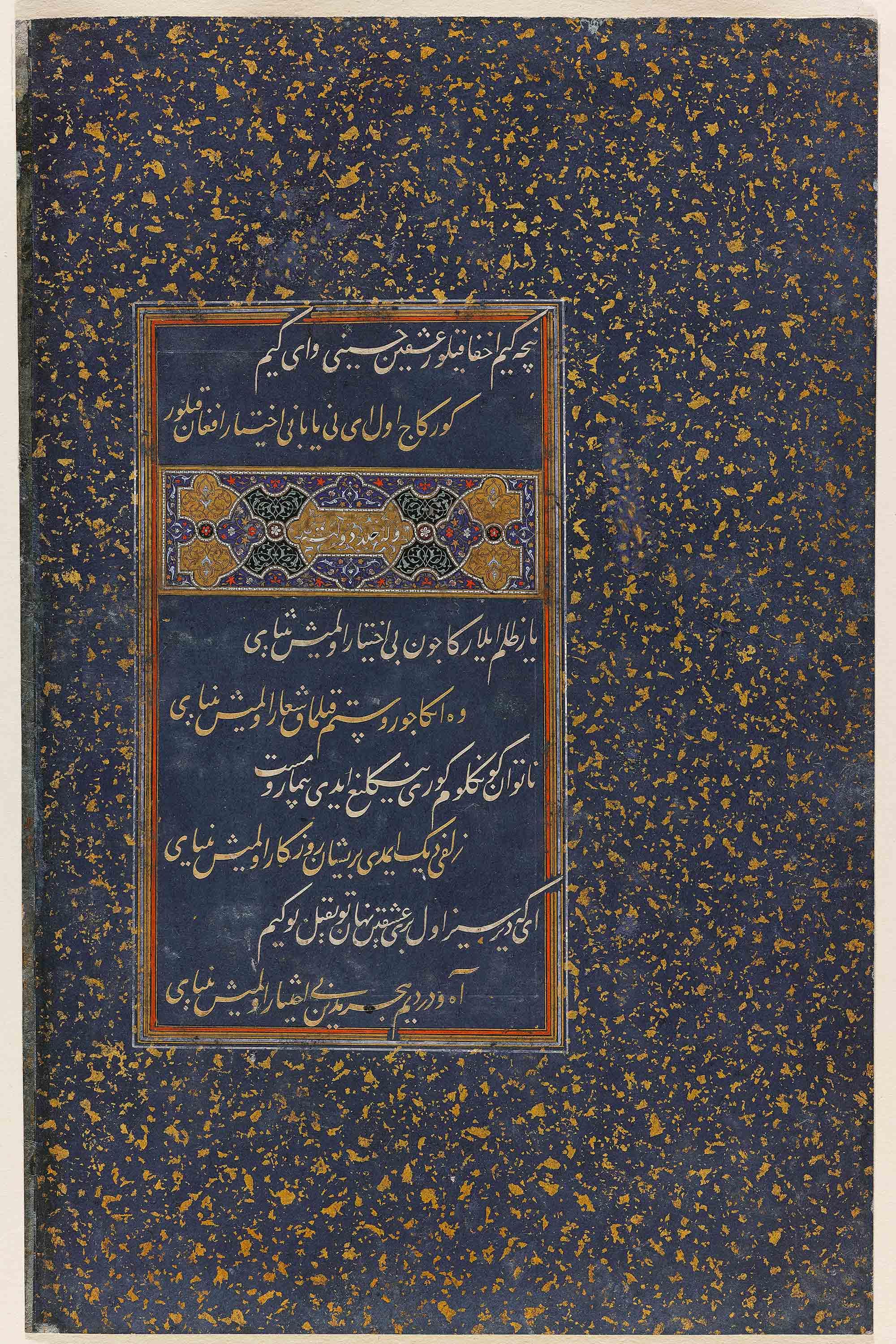Click on the image to zoom
Decoupé Calligraphic Example
From a dispersed Divan of Sultan Hosayn Bayqara (d. 1506)
- Accession Number:AKM227
- Place:Herat, Afghanistan (Historic Iran)
- Dimensions:23.7 x 15.2 cm
- Date:1475
- Materials and Technique:Opaque watercolour, ink, and gold on paper
This exceptional composition is from a dispersed collection of poetry divan composed by the Timurid sultan Hosayn Bayqara, who ruled Herat in present-day Afghanistan from 1469 to 1506. Although Persian was the common literary and administrative language in Central Asia, the Timurids (1370–1507) maintained their native Turkic tongue, Chaghatai, in which these verses are written. Chaghatai became a prestigious literary language in which famous poets, including the founder of the Moghul dynasty, Babur (reigned 1526–30), and the poet-statesman Mir ‘Ali Shir Nawa’i (died 1501), left remarkable works. The verses in this example were written in a nasta‘liq script cut from paper in three different colours, then pasted onto the deep blue background before being set in a gold-speckled paper frame. The most famous practitioner of the cut-calligraphy technique qat‘ is Sheykh ‘Abdollah of Herat, who signed several other folios from this beautiful manuscript. According to his contemporary Babur, however, the quality of Sultan Hosayn Bayqara’s poetry in this divan is not good enough. Could this marvellous calligraphic presentation make up for that?
Note: This online resource is reviewed and updated on an ongoing basis. We are committed to improving this information and will revise and update knowledge about this object as it becomes available.


